Cheng Cheng
Automatic Spectral Calibration of Hyperspectral Images:Method, Dataset and Benchmark
Dec 19, 2024



Abstract:Hyperspectral image (HSI) densely samples the world in both the space and frequency domain and therefore is more distinctive than RGB images. Usually, HSI needs to be calibrated to minimize the impact of various illumination conditions. The traditional way to calibrate HSI utilizes a physical reference, which involves manual operations, occlusions, and/or limits camera mobility. These limitations inspire this paper to automatically calibrate HSIs using a learning-based method. Towards this goal, a large-scale HSI calibration dataset is created, which has 765 high-quality HSI pairs covering diversified natural scenes and illuminations. The dataset is further expanded to 7650 pairs by combining with 10 different physically measured illuminations. A spectral illumination transformer (SIT) together with an illumination attention module is proposed. Extensive benchmarks demonstrate the SoTA performance of the proposed SIT. The benchmarks also indicate that low-light conditions are more challenging than normal conditions. The dataset and codes are available online:https://github.com/duranze/Automatic-spectral-calibration-of-HSI
Hammer: Robust Function-Calling for On-Device Language Models via Function Masking
Oct 06, 2024



Abstract:Large language models have demonstrated impressive value in performing as autonomous agents when equipped with external tools and API calls. Nonetheless, effectively harnessing their potential for executing complex tasks crucially relies on enhancements in their function calling capabilities. This paper identifies a critical gap in existing function calling models, where performance varies significantly across benchmarks, often due to being misled by specific naming conventions. To address such an issue, we introduce Hammer, a novel family of foundation models specifically engineered for on-device function calling. Hammer employs an augmented dataset that enhances models' sensitivity to irrelevant functions and incorporates function masking techniques to minimize misleading. Our empirical evaluations reveal that Hammer not only outperforms larger models but also demonstrates robust generalization across diverse benchmarks, achieving sota results. Our open source contributions include a specialized dataset for irrelevance detection, a tuning framework for enhanced generalization, and the Hammer models, establishing a new standard for function calling performance.
Skywork-Math: Data Scaling Laws for Mathematical Reasoning in Large Language Models -- The Story Goes On
Jul 11, 2024



Abstract:In this paper, we investigate the underlying factors that potentially enhance the mathematical reasoning capabilities of large language models (LLMs). We argue that the data scaling law for math reasoning capabilities in modern LLMs is far from being saturated, highlighting how the model's quality improves with increases in data quantity. To support this claim, we introduce the Skywork-Math model series, supervised fine-tuned (SFT) on common 7B LLMs using our proposed 2.5M-instance Skywork-MathQA dataset. Skywork-Math 7B has achieved impressive accuracies of 51.2% on the competition-level MATH benchmark and 83.9% on the GSM8K benchmark using only SFT data, outperforming an early version of GPT-4 on MATH. The superior performance of Skywork-Math models contributes to our novel two-stage data synthesis and model SFT pipelines, which include three different augmentation methods and a diverse seed problem set, ensuring both the quantity and quality of Skywork-MathQA dataset across varying difficulty levels. Most importantly, we provide several practical takeaways to enhance math reasoning abilities in LLMs for both research and industry applications.
Skywork-MoE: A Deep Dive into Training Techniques for Mixture-of-Experts Language Models
Jun 03, 2024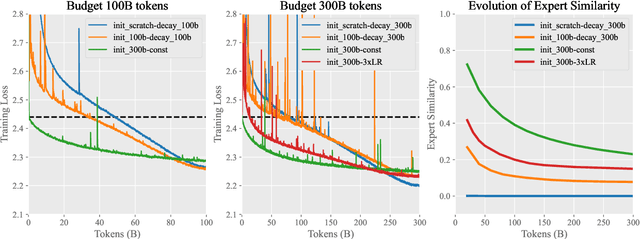
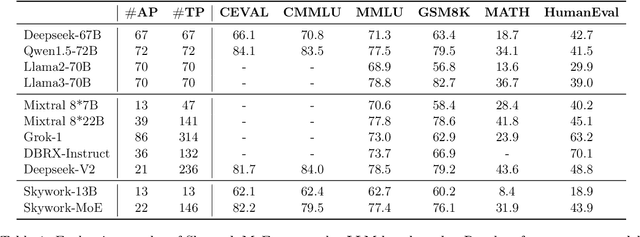
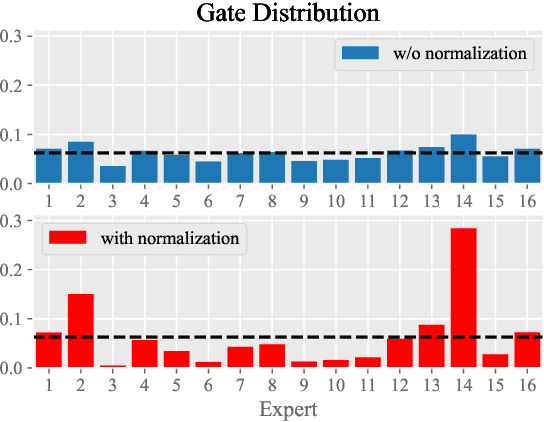
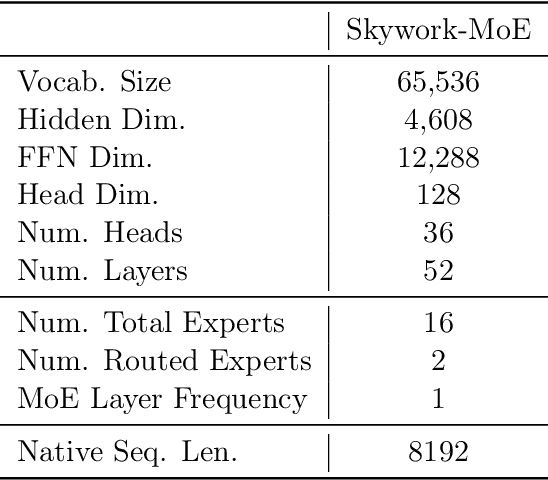
Abstract:In this technical report, we introduce the training methodologies implemented in the development of Skywork-MoE, a high-performance mixture-of-experts (MoE) large language model (LLM) with 146 billion parameters and 16 experts. It is initialized from the pre-existing dense checkpoints of our Skywork-13B model. We explore the comparative effectiveness of upcycling versus training from scratch initializations. Our findings suggest that the choice between these two approaches should consider both the performance of the existing dense checkpoints and the MoE training budget. We highlight two innovative techniques: gating logit normalization, which improves expert diversification, and adaptive auxiliary loss coefficients, allowing for layer-specific adjustment of auxiliary loss coefficients. Our experimental results validate the effectiveness of these methods. Leveraging these techniques and insights, we trained our upcycled Skywork-MoE on a condensed subset of our SkyPile corpus. The evaluation results demonstrate that our model delivers strong performance across a wide range of benchmarks.
LongSkywork: A Training Recipe for Efficiently Extending Context Length in Large Language Models
Jun 02, 2024Abstract:We introduce LongSkywork, a long-context Large Language Model (LLM) capable of processing up to 200,000 tokens. We provide a training recipe for efficiently extending context length of LLMs. We identify that the critical element in enhancing long-context processing capability is to incorporate a long-context SFT stage following the standard SFT stage. A mere 200 iterations can convert the standard SFT model into a long-context model. To reduce the effort in collecting and annotating data for long-context language modeling, we develop two novel methods for creating synthetic data. These methods are applied during the continual pretraining phase as well as the Supervised Fine-Tuning (SFT) phase, greatly enhancing the training efficiency of our long-context LLMs. Our findings suggest that synthetic long-context SFT data can surpass the performance of data curated by humans to some extent. LongSkywork achieves outstanding performance on a variety of long-context benchmarks. In the Needle test, a benchmark for long-context information retrieval, our models achieved perfect accuracy across multiple context spans. Moreover, in realistic application scenarios, LongSkywork-13B demonstrates performance on par with Claude2.1, the leading long-context model, underscoring the effectiveness of our proposed methods.
Activating Wider Areas in Image Super-Resolution
Mar 13, 2024Abstract:The prevalence of convolution neural networks (CNNs) and vision transformers (ViTs) has markedly revolutionized the area of single-image super-resolution (SISR). To further boost the SR performances, several techniques, such as residual learning and attention mechanism, are introduced, which can be largely attributed to a wider range of activated area, that is, the input pixels that strongly influence the SR results. However, the possibility of further improving SR performance through another versatile vision backbone remains an unresolved challenge. To address this issue, in this paper, we unleash the representation potential of the modern state space model, i.e., Vision Mamba (Vim), in the context of SISR. Specifically, we present three recipes for better utilization of Vim-based models: 1) Integration into a MetaFormer-style block; 2) Pre-training on a larger and broader dataset; 3) Employing complementary attention mechanism, upon which we introduce the MMA. The resulting network MMA is capable of finding the most relevant and representative input pixels to reconstruct the corresponding high-resolution images. Comprehensive experimental analysis reveals that MMA not only achieves competitive or even superior performance compared to state-of-the-art SISR methods but also maintains relatively low memory and computational overheads (e.g., +0.5 dB PSNR elevation on Manga109 dataset with 19.8 M parameters at the scale of 2). Furthermore, MMA proves its versatility in lightweight SR applications. Through this work, we aim to illuminate the potential applications of state space models in the broader realm of image processing rather than SISR, encouraging further exploration in this innovative direction.
PLReMix: Combating Noisy Labels with Pseudo-Label Relaxed Contrastive Representation Learning
Feb 27, 2024



Abstract:Recently, the application of Contrastive Representation Learning (CRL) in learning with noisy labels (LNL) has shown promising advancements due to its remarkable ability to learn well-distributed representations for better distinguishing noisy labels. However, CRL is mainly used as a pre-training technique, leading to a complicated multi-stage training pipeline. We also observed that trivially combining CRL with supervised LNL methods decreases performance. Using different images from the same class as negative pairs in CRL creates optimization conflicts between CRL and the supervised loss. To address these two issues, we propose an end-to-end PLReMix framework that avoids the complicated pipeline by introducing a Pseudo-Label Relaxed (PLR) contrastive loss to alleviate the conflicts between losses. This PLR loss constructs a reliable negative set of each sample by filtering out its inappropriate negative pairs that overlap at the top k indices of prediction probabilities, leading to more compact semantic clusters than vanilla CRL. Furthermore, a two-dimensional Gaussian Mixture Model (GMM) is adopted to distinguish clean and noisy samples by leveraging semantic information and model outputs simultaneously, which is expanded on the previously widely used one-dimensional form. The PLR loss and a semi-supervised loss are simultaneously applied to train on the GMM divided clean and noisy samples. Experiments on multiple benchmark datasets demonstrate the effectiveness of the proposed method. Our proposed PLR loss is scalable, which can be easily integrated into other LNL methods and boost their performance. Codes will be available.
Meta-Adapter: An Online Few-shot Learner for Vision-Language Model
Nov 07, 2023



Abstract:The contrastive vision-language pre-training, known as CLIP, demonstrates remarkable potential in perceiving open-world visual concepts, enabling effective zero-shot image recognition. Nevertheless, few-shot learning methods based on CLIP typically require offline fine-tuning of the parameters on few-shot samples, resulting in longer inference time and the risk of over-fitting in certain domains. To tackle these challenges, we propose the Meta-Adapter, a lightweight residual-style adapter, to refine the CLIP features guided by the few-shot samples in an online manner. With a few training samples, our method can enable effective few-shot learning capabilities and generalize to unseen data or tasks without additional fine-tuning, achieving competitive performance and high efficiency. Without bells and whistles, our approach outperforms the state-of-the-art online few-shot learning method by an average of 3.6\% on eight image classification datasets with higher inference speed. Furthermore, our model is simple and flexible, serving as a plug-and-play module directly applicable to downstream tasks. Without further fine-tuning, Meta-Adapter obtains notable performance improvements in open-vocabulary object detection and segmentation tasks.
Skywork: A More Open Bilingual Foundation Model
Oct 30, 2023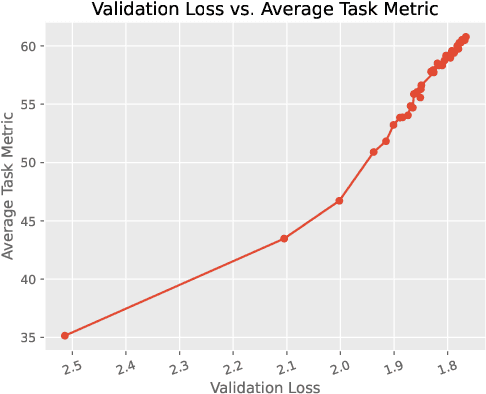
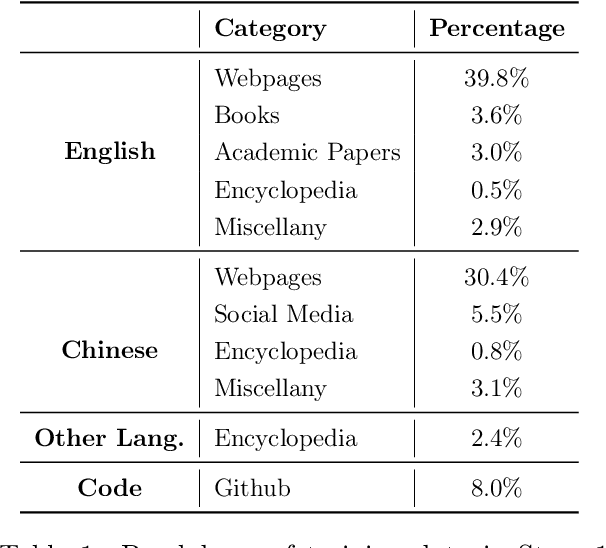
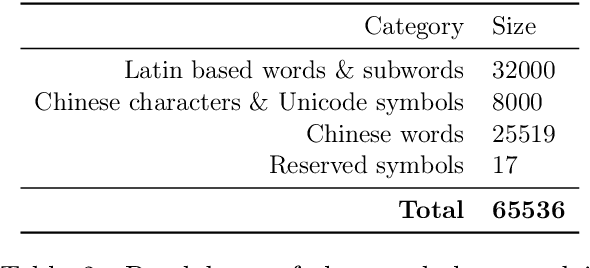
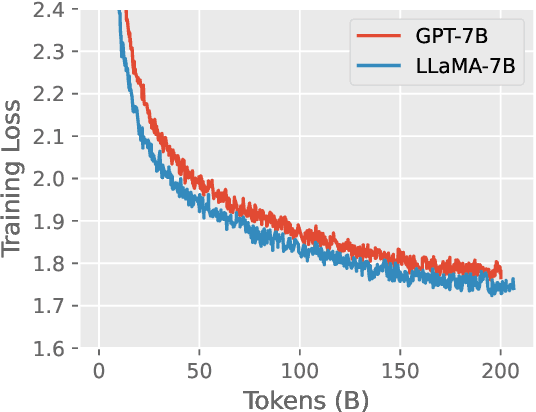
Abstract:In this technical report, we present Skywork-13B, a family of large language models (LLMs) trained on a corpus of over 3.2 trillion tokens drawn from both English and Chinese texts. This bilingual foundation model is the most extensively trained and openly published LLMs of comparable size to date. We introduce a two-stage training methodology using a segmented corpus, targeting general purpose training and then domain-specific enhancement training, respectively. We show that our model not only excels on popular benchmarks, but also achieves \emph{state of the art} performance in Chinese language modeling on diverse domains. Furthermore, we propose a novel leakage detection method, demonstrating that test data contamination is a pressing issue warranting further investigation by the LLM community. To spur future research, we release Skywork-13B along with checkpoints obtained during intermediate stages of the training process. We are also releasing part of our SkyPile corpus, a collection of over 150 billion tokens of web text, which is the largest high quality open Chinese pre-training corpus to date. We hope Skywork-13B and our open corpus will serve as a valuable open-source resource to democratize access to high-quality LLMs.
Random Sampling of Bandlimited Graph Signals from Local Measurements
Oct 18, 2023


Abstract:The random sampling on graph signals is one of the fundamental topics in graph signal processing. In this letter, we consider the random sampling of k-bandlimited signals from the local measurements and show that no more than O(klogk) measurements with replacement are sufficient for the accurate and stable recovery of any k-bandlimited graph signals. We propose two random sampling strategies based on the minimum measurements, i.e., the optimal sampling and the estimated sampling. The geodesic distance between vertices is introduced to design the sampling probability distribution. Numerical experiments are included to show the effectiveness of the proposed methods.
 Add to Chrome
Add to Chrome Add to Firefox
Add to Firefox Add to Edge
Add to Edge